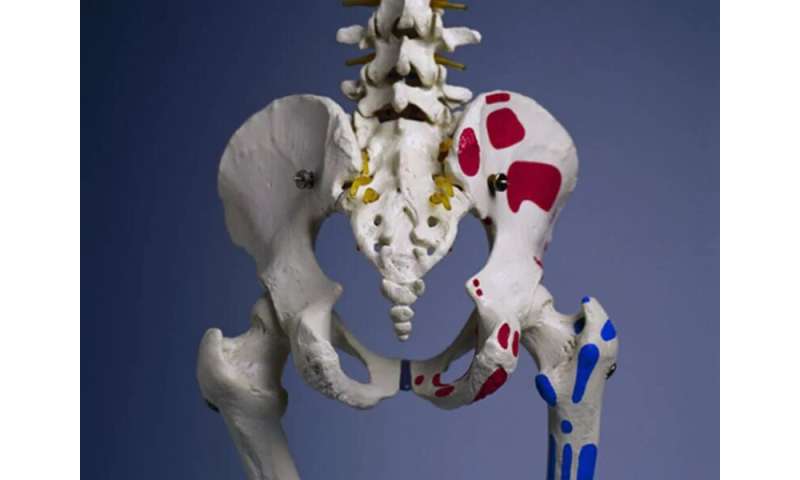
If you have a bad hip and lower back pain, a new study suggests that hip replacement surgery may solve both issues at once.
Researchers at the Hospital for Special Surgery in New York City focused on 500 patients who underwent hip replacement surgery and followed up with them one year after the operation.
Over 40% reported pain in their lower back prior to hip surgery. Of that group, 82% saw their back pain vanish after surgery.
It was “completely gone,” said study author Dr. Jonathan Vigdorchik, a hip and knee surgeon at the hospital.
He said that experts in his field have studied the connection between the hip and back for years.
A hip replacement is a surgical procedure to replace a worn-out or damaged hip joint with an artificial one. On average, it is a highly successful operation, with 95% of patients experiencing pain relief, according to the Hospital for Special Surgery.
“It’s an outstanding procedure,” said Dr. Craig Della Valle, a professor of orthopedic surgery at Rush University Medical Center in Chicago. “There are very few things in medicine that are close to hip replacement in terms of how good of a medical procedure it is.” He wasn’t part of the study.
But Vigdorchik added that patients who have undergone some types of spinal surgery before a hip replacement face five times the rate of complications compared to the general population—for which the complication rate is less than 1%.
This knowledge prompted him to dive deeper into the hip-back interplay.
“We noticed that there are certain conditions where a hip condition can actually put undue stress on the back,” Vigdorchik explained.
He and his fellow researchers wanted to find out how effective a hip replacement can be in eliminating low back pain, and determine which patients are more likely to benefit.
The patients whose low back pain resolved after the surgery were those with “flexible spines,” according to Vigdorchik. When a person’s spine is flexible, a stiff or poorly functioning hip can drive the spine to move more than usual, causing pain.
Those with normal flexibility in their spine were also highly likely to have their pain resolved.
“Those are the patients whose back pain went away completely after their hip replacement, because their back pain was probably caused by their hip not functioning properly to begin with,” said Vigdorchik.
But the back pain in patients with stiff spines did not go away. Patients with stiff spines already have serious arthritis of the spine, and replacing the hip is unlikely to relieve their pain.
But how can you know if your back pain could be resolved with a hip replacement?
It’s not easy to figure that out on your own, according to Vigdorchik. “It really relies on a good physical exam, and then good X-rays,” he said.
Before a patient undergoes a hip replacement, surgeons will typically take an X-ray of the patient lying down.
In this study, researchers took X-rays of their patients standing up and sitting down, both before and after the surgery.
These X-rays allowed them to see how the hip and spine moved in relation to each other, and assessed the flexibility of their spine, as the patient switched from a standing position to a seated position.
Vigdorchik encouraged other surgeons to utilize these X-rays to identify patients whose ailing backs may be relieved by a hip replacement.
He also advised surgeons in the field to “look beyond just the hip.”
“Anytime they’re looking at the hip, they should also look at the back, and anytime they’re looking at the knee, they should also look at the hip,” Vigdorchik said.
The existence of an interplay between the hip and back is well known to experts, but Della Valle said that this study showed how consistent it is.
He said the study gives surgeons in the field “some tools to try to predict which patients you can tell, ‘Yeah, your back pain will get better,’ and others, well, maybe it won’t.”
Source: Read Full Article
